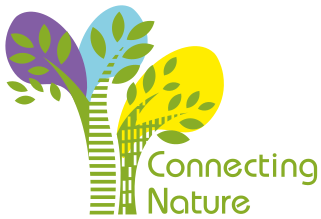Nature-based solutions are the hip new trend here to soothe our urban environmental woes – but are they actually solutions for nature?
There’s nothing natural about cities, is there? Built by people, for people, using man-made materials, with manicured green spaces full of specimen trees and clipped lawns that do little for wildlife. The urban environment was never intended to be “environmental”.
This is despite the fact that many city sites were historically chosen because of their strategic proximity to natural resources like rivers, lakes, estuaries and coasts. These habitats – already home to much wildlife – provided humans with opportunities for food, trade and waste disposal. Now that these things are done by other means, cities can often feel divorced from the landscapes in which they sit, as can their residents.
Nobody in human history is more disconnected from nature than the 21st-c entury urban dweller. The only natural things we tend to notice are the ones that annoy us: foxes ripping open the bins; the neighbour’s tree encroaching on our evening sun; seagulls making a racket on the roof; pigeons doing their business on our car windscreens; moss and weeds in the crevices between paving slabs; wasps buzzing around our pint of cider . . .
We don’t usually acknowledge the tiny flowering plant poking triumphantly through a crack in a wall, or the intrepid shrub scaling the storeys of a dilapidated building. But if you’re prepared to look, a town or city can reveal itself as home to a surprising variety of plants, insects, birds, and other creatures who have carved out a niche in the urban jungle.
But many of us don’t look, or don’t have the knowledge to appreciate the wonder of what we’re looking at, so we pass by these tenacious and often quite beautiful species. When was the last time you stopped in the street to admire a bird or plant? Even I can’t remember the last time I did – and I’m an ecologist. We’re busy, with so much to do that noticing the beauty of a city or town’s undomesticated inhabitants isn’t high on the priority list.
Intangible benefits
If we find it so hard to appreciate the aesthetic benefits that city-based nature can offer, small as they may be, is there any hope for the less tangible ones? Regular readers of this column will – if I’ve been doing my job – be well aware of the multiple roles that nature plays in our quality of life, beyond simply looking good.
It’s these other, less obvious traits – purifying the air, helping rainwater soak into soils, sequestering carbon – that governments, local authorities and scientific researchers are now thinking about as droughts and heavy rainfall become more frequent, the impact of air pollution on our health becomes more widely understood, and the obesity crisis becomes more directly linked with our sedentary lifestyles.
"I really hate to be sceptical, but as a scientist it is kind of my job"
Nature is now seen as the solution to these problems, and the EU has committed millions of euro in research funding to it: nature-based solutions are the hot new concept, especially in cities, and they encompass a dizzying array of interventions: green walls, green roofs, rainwater gardens, sustainable urban drainage systems, anti-pollution planting regimes, etc. It feels very positive: good for people, good for the planet – win-win!
Solutions for nature
But . . . yes, there is a but. I hate to be sceptical, but as a scientist it’s kind of my job, so I’m professionally obliged to point out that there is little evidence that nature-based solutions are in fact solutions for nature. While they may do many positive things for people, they don’t necessarily do much for the plants and creatures that are most vulnerable. Which is a shame because, although it may seem counterintuitive, cities could actually be a haven for biodiversity, were we to make the effort: much of the countryside is in such horrific shape that cities are increasingly viable refuges for our homeless, hungry, poisoned wildlife.
The current portfolio of nature-based solutions aren’t laser-focused on this aim, though. Better biodiversity is a nice side-effect, but the emphasis for these projects is very much on responding to other environmental challenges that affect humans.
So, another hip new marketing trend for green-ish stuff or a potential life saver for our wildlife? In truth, it’s hard to tell. Nature-based solutions have the potential to be either, or something in the middle. With proper planning and proper evidence-based design, there’s nothing to say they can’t meet the needs of all urban inhabitants, whether they have six legs or two.
Jane Stout is professor of botany at TCD School of Natural Sciences
This article first appeared in the Irish Times on Thursday 22nd March 2018
https://www.irishtimes.com/news/science/could-a-paradise-city-ever-come-about-1.3433783

